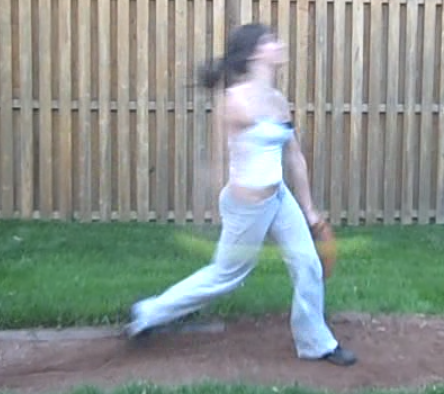Why You Should Stop Saying “Release Point”
“Release point” is very common universal terminology across pretty much all pitching styles. I’m sure you’ve all heard it, said it, and worried about yours being “off.” While there is technically a precise moment in time and spot in the air when the ball breaks contact with your fingers, I believe that thinking about this “point” can be counterproductive.
What’s wrong with thinking about your release point?
When you’re pitching, your arm is moving very very fast. At that speed, it is very difficult to aim for a particular “point” and actually hit that point right when you let go of the ball. And if you’re having trouble with your release, trying to hit that point will likely cause you to slow down subconsciously, because the slower your arm moves the easier it is to see/feel where your hand is in space. But slowing down will not only take velocity away from your pitch, it will also likely throw your release point off further.
What’s the alternative?
it’s not a release point; it’s a release zone. We call it the throw zone.

See that blurred yellow streak left by the ball? Can you tell exactly when it breaks contact with her hand? No. Is that a bad thing? No. What matters is that the hand (and ball) are accelerating through the entire throw zone which is pointed straight at the catcher’s target. This is a 68 mile per hour fastball, by the way.
If your release is off, instead of thinking about your release point, think about your hand path. Chances are if you’re missing your target, your hand path does not match the pitch you’re trying to throw. You may be coming out of the throw zone too high, not making it through the throw zone at all, or pointing your throw zone somewhere other than the catcher’s glove. If you focus on the path of your hand through the throw zone instead of a single point, you can also focus on accelerating your hand through the throw zone at the same time.
If you’re unsure whether or not you’re using your throw zone properly, take some video of yourself and have a look. Compare it to some of the videos we’ve posted in the past, or send it to us for analysis.
Here’s a video on establishing your throw zone:
And one that goes into greater detail about the relationship between your throw zone and throwing strikes:
And here are lots more throw zone videos on our YouTube channel!
hi carly , your web sight is wonderful,my question is ,at what angel should your hips be at in your pitching motion when you release the ball in conjunction to the power line ?still completely open to let the ball pass by first or closing at a certain angle,any input would be appreciated,thanks
Hi Johnny,
The hips should be at a slight angle, for example if we’re talking about a right handed pitcher throwing a fastball down the middle, her front hip should be slightly off the power line and pointed approximately toward the catcher’s knee on the outside (for a righty batter) as the ball is being released. It should already be in this position when the pitcher lands, and shouldn’t close completely until after the ball leaves the hand.